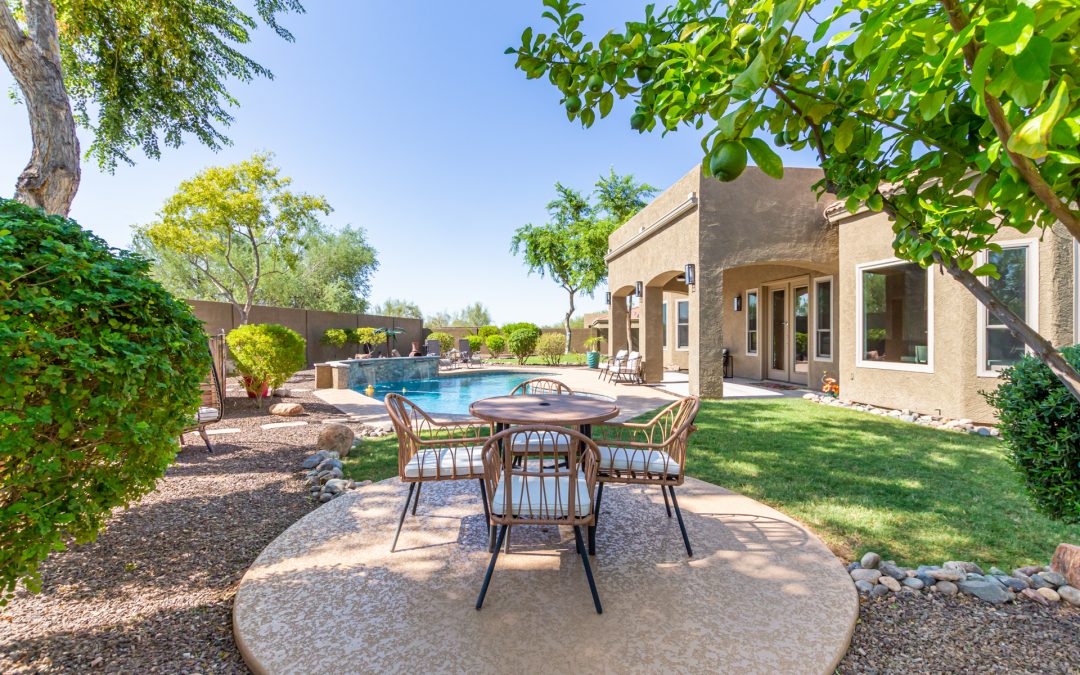
by MICHAEL BODEEN | Nov 27, 2023 | Bodeen Team Blog, Mike's "Real State" of the Market, North Scottsdale News, Real Estate News, Uncategorized
We trust your Thanksgiving weekend was wonderful! Apart from the traditional, additional, and certainly not subliminal poundage gained, it was for the Bodeen family and friends.
As most of our readers are aware, our current housing shortage is due in large part to homeowners having very low mortgage rates. They are not willing to bite off a 7% or 8% mortgage rate to sell and buy.
According to a new report from Redfin, via BusinessWire.com, roughly 6 of 7 (85%) homeowners with mortgages have rates under 5%. A large percentage of the under 5 percenters have rates in the 2.5% to 3.5% range. So far, there’s not enough upside for them to sell.
Then, I came across an article a few days ago from HousingWire.com provoking further thought. The article stated that the largest share of people aged 65 or older in our country own the largest share of mortgage-free homes. As of 2022, almost 40% of U.S. homeowners owned their homes free and clear. Read the housingwire.com article here.
This is wonderful news, if you’re one of those fortunate enough to be in the 40%.
On top of ALL this, is yet another article (Forbes) about how my generation, the Baby Boomers, will bequeath almost 70 trillion (that’s illion with a Tr) dollars to our offspring, and much of it before 2030. With the greatest generation winding down and the Boomers soon to follow, the greatest wealth transfer in the history of mankind is happening – now!
How will these new generations invest/spend this absurdly huge amount of passed down wealth? In many things of course, but one investment for sure, will be real estate. As my former and deceased Realtor father-in-law used to preach to anyone who would listen, (which wasn’t many), “you can make more babies, but you can’t make more land.”
So, when we encourage, nigh, exhort our friends, or anyone who will listen, to buy real estate, it’s knowing that successive gens will be able to step in line ahead of you to do so. Beat them to it!
The final paragraph of this Forbes article reads, “Being locked out of the housing market due to high-interest rates and housing prices could soon change. With the new largess, Millennials could purchase new homes and even secondary vacation homes…” Read the Forbes article here
So renters, to sum up, at least 3 forces are pitted against the future affordability of a home for you:
- 40% of Americans who have no mortgage. Even if they might sell, these would be cash buyer competitors for the home you may want.
- 85% of homeowners with a mortgage have an existing rate under 5%, and are not too keen on selling than buying a home with a 7% or 8% new mortgage.
- Current and future competition from all cash nouveau riche home buyers.
So, when Mike or Jonathan Bodeen continue to encourage, nigh, exhort our friends, or anyone who will listen, to buy real estate, it’s knowing that successive gens will be able to step in line ahead of you to do so.
Beat them to it!
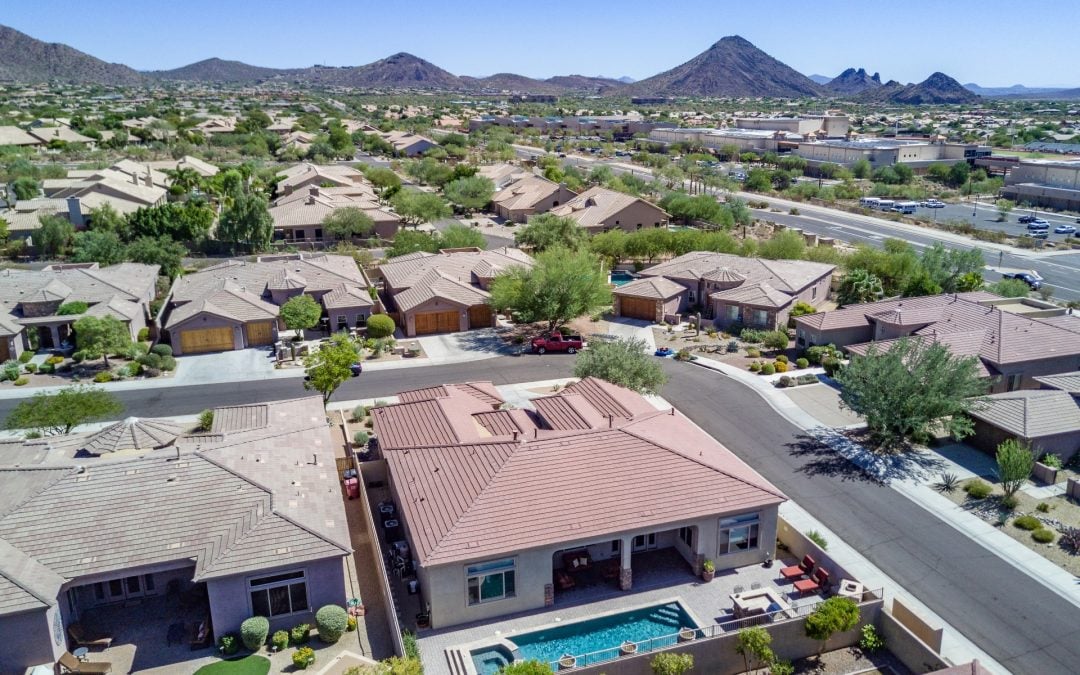
by MICHAEL BODEEN | Jul 18, 2022 | North Scottdale Zip Code Information, North Scottsdale News, Real Estate News
Terrific communities encompass the 85259 Zip Code. If we were speaking geographically abou tit we would say that it’s located in the East Central part of Scottsdale. Some folks may wonder then, why we include the 85259-zip code in North Scottsdale? The same folks rightly ask the question about 85254, 85258, and 85260 as well? After all, if you look at the long (32 miles) city of Scottsdale, you’d see it to be more central or South Central than north.
It was not too long in Scottsdale’s past (1960’s) that if you lived around Shea Blvd, that was considered “nose-bleed” country. Even McCormick Ranch (85258) was considered pretty far north from Old Town.
So the answer seems to be that for many of us who have been here for awhile, these zip code communities were a part of North Scottsdale.
85259 Zip Code contains numerous upscale communities, such as Stonegate, The Ancala Country Club, portions of Scottsdale Ranch, Scottsdale Mountain, Cactus Gates, Rancho Trinidad, Hidden Hills, and Bella Montagna.
Mountain and City light views, terrific convenience to recreation, shopping, golf, and health facilities abound. In fact, some folks refer to the Shea Blvd N/S dividing line as the “Medical Mile” with Honor hospital and the Mayo clinic plus hundreds of all types of medical offices within a few miles.
Schools are excellent in the 85259 community which includes Desert Mountain High and Middle public school. One of the highest rated schools in the country is the Basis Charter School encompassing grades 5-12. Anasazi Elementary is another excellent choice.
As of the summer of 2022, 71 homes were listed for sale at an average list price per square foot (PSF) of $480. Under Contract listings average list prices PSF are $430, while closed median sales over the past 6 months averaged $1.085M.
Our market is changing. When updated in July, we’ll see greater listings and fewer sales, reflecting a Valley and National trend.
85259 Real Estate as of June 1st 2022
Today Last Month Last Year 1 Year Change
Active Listings: 71 60 66 +08%
Listings Under Contract 49 48 60 -18%
Sales Per Month 42 55 57 -26%
Sales Per Year 541 556 598 -10%
Months of Supply 1.1 0.7 0.7 +4 Months
Annual Appreciation Median 23% 21% 19% -4%
Median Annual Sales Price $1.085M $1.050 $880K +23%
Considering Buying or Selling in North Scottsdale or the Northeast Valley. Give Mike a call at 602.689.3100 or send an email to: [email protected].
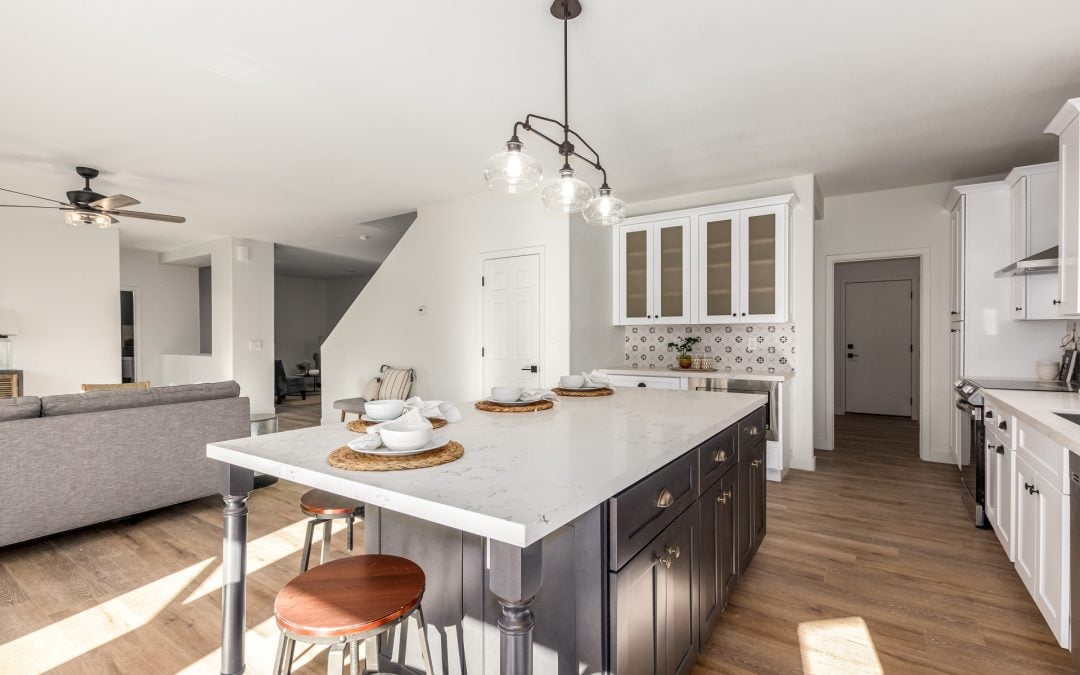
by MICHAEL BODEEN | Jun 27, 2022 | Bodeen Team Blog, Mike's "Real State" of the Market, North Scottsdale News
Mortgage rates may determine how long our (national and Phoenix) current downturn will last. The cost of living, or inflation, may determine interest rates. Lenders don’t make money by loaning to us at less than the rate of inflation. Which is why we always felt that the greatest deal around was a fixed rate mortgage because we were paying the lender back with inflated dollars.
For the average borrower, the current 30-year mortgage rate is now at 6% – assuming you have a mid-700 Credit score or above. For a 50 year context, prior to 2022, the national average mortgage rate from 1971 has been? Jackpot: 7.77%! They have been less than that since 2001. (See Chart below)
“Jim, if rates EVER get below 13% again, we’ll be rich!”
When 30 year mortgage rates were uber cheap, as in before February of this year, and for most of the last 10 years, we Realtors and lenders were living in a most unreal world of cheap rates. Most of my younger colleagues, and certainly those who have been in the business for less than 10 years, would oft roll their eyes when I talk about the good and not-so-good old days, prior to this millennia. And as long as we had a market in balance, all was good.
But alas…
So here we are in 2022, our 6% rates slowing (stopping?) our market. I don’t have any numbers about Realtors leaving the business yet – we’ll know more about that at year’s end when we have to cough up our annual board, MLS, and Realtor dues for 2023. But on the mortgage end, over 75,000 mortgage related jobs nationally have been cut, and lenders are just getting started slicing and dicing. It started last year with the refi market dropping and is now in full swing with purchase apps plummeting.
Will we see 3% Rates Ever Again?
Will we see 3% rates ever again? Only the Lord knows that one, but if we did, it may not be too healthy for us. Honestly, the 5%-6% range may be the real sweet spot. Think about it. How was our market doing at 3%? How was it for first time home buyers as they competed with institutional and private investors who soaked up much of the new inventory of homes coming on the market causing the market to inflate to unsustainable prices?
One of the benefits of our rising market might be the slowing of buyers buying as landlords because the market numbers no longer make economic sense. But, you say, buyers will have to pay a higher monthly payment. Yes, but how would a 6% mortgage look compared to a 7%, 8%, 10% or more rate?
Remember, for long term rates, inflation is the key metric. Look again at the chart, half that chart (25 years) is above the near 8% long term average. I remember saying to a former friend and colleague of mine in Truckee, California in 1984, Jim Orebaugh, “Jim, if rates EVER get below 13% again, we’ll be rich!” No one can tell me or you how high inflation will go!
You say, Mike you’re not an economist, what do you know? You got me there. After all, economists have forecasted nine out of the last five recessions😉
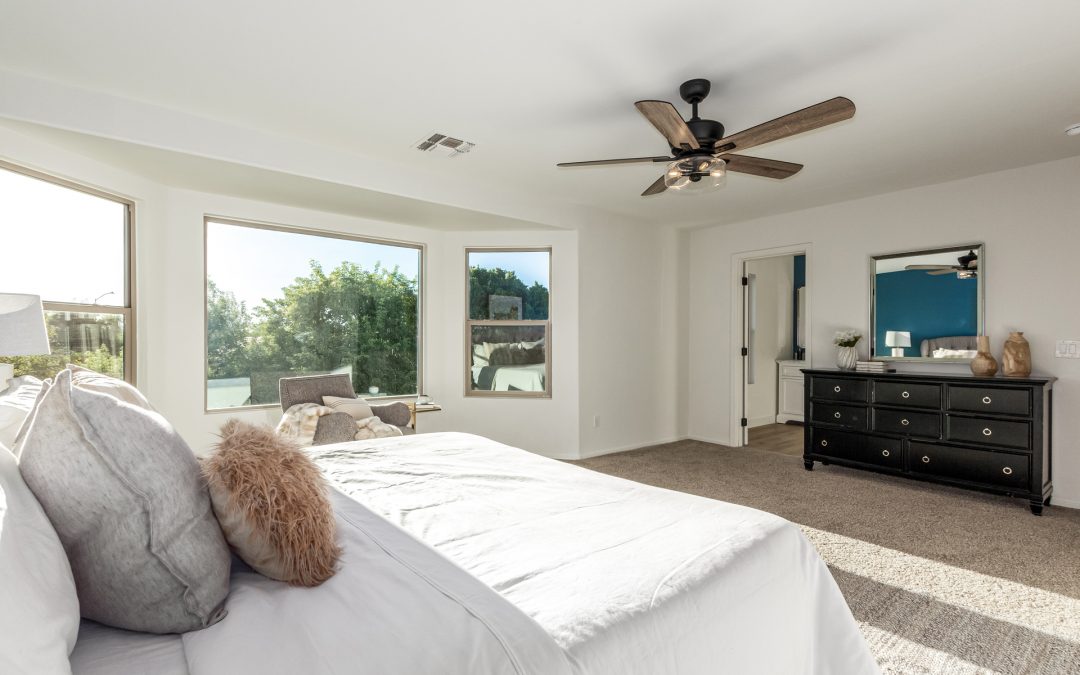
by MICHAEL BODEEN | Jun 20, 2022 | Bodeen Team Blog, Mike's "Real State" of the Market, North Scottsdale News
Not easily forgotten is the winter of 2020, which emerged the reality of a worldwide pandemic not seen in my lifetime. In February 2020, appreciation in the Phoenix and Scottsdale Area real estate market was nearly 10%. There was a six-year period from 2014 to 2020 that had annual appreciation averaging around 5%. That was a normal market.
And then, the pandemic hit. As you can see by the chart below, right after that February, coinciding with the pandemic, immediately the annual (based on monthly) appreciation dropped in March to 8.5%, April to 6.8%, and May to 4.5%. In the midst of this new pandemic, everyone – yes, everyone, expected this to happen – and worsen.
But then, the incredible unforeseen happened. Our market, as well as most metropolitan markets in the U.S., began to soar. Demand took off. Listing inventory, after a brief increase in that 2020 winter, began dropping. Multiple offers and bidding wars became the normal storyline – everywhere. By October of 2020, the annual appreciation rate based on Monthly Price Per Square foot (PSF) hit 19.1%. In February of 2021, that rate was up to 23%. In April it increased to 32%, and it peaked at 38.4% the next month (May 2021).
One year later, as the pandemic is normalizing, folks are now doing what we thought they’d do at the beginning of the pandemic – sell in droves. More listings have been added (11,845) to the Arizona Regional Multiple Listing Service (MLS) in the past 4 weeks than any other 4-week period in the history of the Phoenix MLS, per the Cromford Report.
We are currently getting 34% more new listings than average every 28 days. If this rate continues, it is estimated that a balanced market will return this August. Some of our cities are close to experiencing that balance now.
All this is good news for buyers. What’s not been good news of course is the escalation of mortgage rates – now in the 6% range. Someone reminded me the other day that my real estate career goes back to the 18% mortgage rates in the 80’s. Of course, the huge difference between now and then is the high price of current housing. 18% mortgage rates, which of course halted real estate sales then, happened when the U.S. home median price was under $90,000.
Are we in a meltdown, or will the market pull up? Our counsel to buyers is to take advantage of more homes on the market to find that right one. When inflation gets tamed and comes down to acceptable levels, this market will again change. When will inflation get tamed? That’s the question before us.

by MICHAEL BODEEN | May 30, 2022 | Bodeen Team Blog, Mike's "Real State" of the Market, North Scottsdale News
I am a blessed man, and how well I know it! I found (fell into) a career in my very early 20’s that I have enjoyed immensely. For sure, it’s had its ups and downs. In fact when Karen and I were married, I had stepped out of real estate for a 9 month period and was never going to go back into commission sales again – EVER! Why? Because I couldn’t make a sale to save my soul. It was a period of sky-high mortgage rates, around 14%, which had come down from a record 18.45% in 1981.
The only way I got back into real estate was because a kind man named Glen Chileski hired me to manage ERA Truckee Tahoe Realty and put me on a salary, with commissions, and overrides. I owe that man a debt of huge magnitude. I got to work in a business that was different every day of the year, presenting numerous challenges, interacting with vastly different people, and it provided for my family.
But oh, the ebb and flow!
A wise King once said, “That which has been is that which will be, and that which has been done is that which will be done. So, there is nothing new under the sun.”
King Solomon could have been talking about modern day stock or real estate markets – particularly now as it relates to the changing housing market and the
numerous career changes that are and will be unfolding in the months ahead.
“Realtor contraction will happen also. It always does when change happens in the industry. I witnessed many leave the business when MLS computerization entered the real estate marketplace in the 80’s taking the place of our beloved real estate books.”
Beginning in 2007, millions of folks lost their job in the Great Recession when we experienced the bursting of the housing bubble. In the years that followed, tens of thousands of foreclosures were happening each year. We Realtors were surviving on doing “short sales.” In all my history of working in this industry, that was the bleakest. Right and left, friends and neighbors were losing their homes. Thousands of Realtors threw in the career towel during that distressing market.
And what of the present? We’re beginning to see large scale layoffs in the mortgage industry as thousands of jobs are being eliminated as new purchase mortgages and refinances fall off the table due to the rising mortgage rates that now exceed 5%. (That last sentence -5%- blows my mind)
Realtor contraction will happen also. It always does when change happens in the industry. I witnessed many leave the business when MLS computerization entered the real estate marketplace in the 80’s taking the place of our beloved real estate books. Now, with low inventory, huge corporate investors buying up homes for rentals, sales are dropping. The reduction of first time and move-up buyers due to higher rates doesn’t help either
The next wave of change is now happening. There is nothing new under the sun! Not even our hot Scottsdale sun!
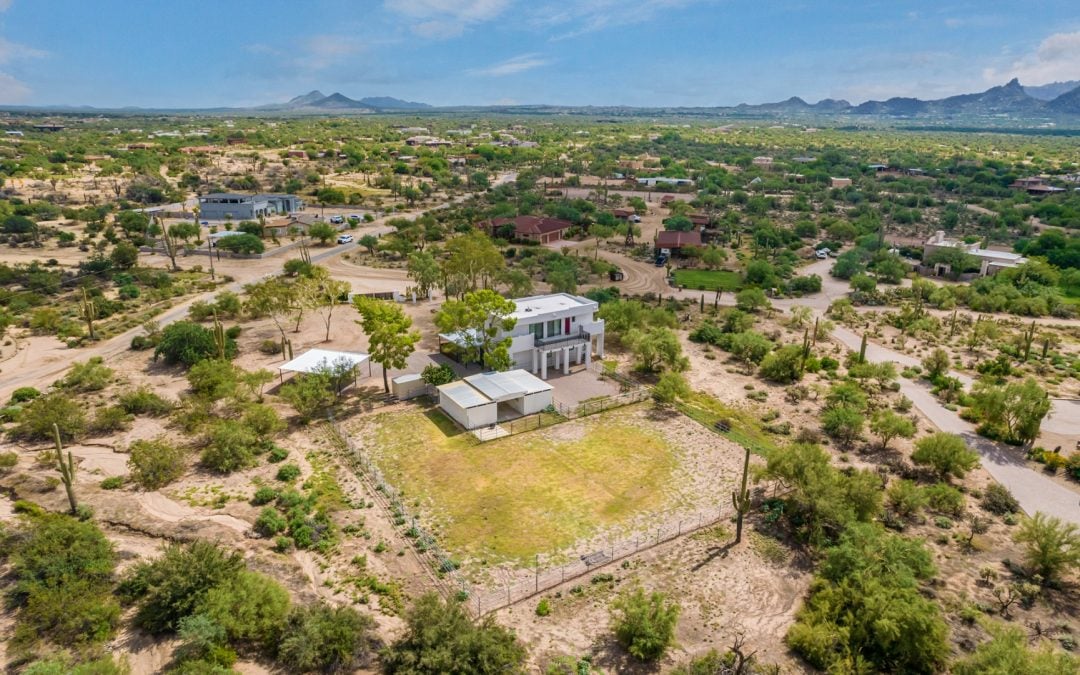
by MICHAEL BODEEN | Apr 18, 2022 | Bodeen Team Blog, Buying a Home, Featured Communities, Mike's "Real State" of the Market, North Scottsdale News, Real Estate News
We knew it was bound to happen, the question was when? It’s looking like the when is now! The rental market is showing signs of slow-down. If we compare our rental market with 2021 at this time, we see the following supply changes occurring as reported by the Cromford Report:
- single-family detached actives have increased by 99%
- apartment actives have increased by 69%
- townhouse actives have increased by 15%
Single-family detached (SFD) rentals are in much greater supply in 2022 and are currently 71% of all rental listings in the Arizona Regional MLS (ARMLS). At the same point in 2021 they were only 51% of rental listings. (Caveat: The ARMLS numbers represented here are not the entire market, however they do provide a fairly accurate picture of the whole market)
Cromford is also seeing the average asking price for single family detached rentals drop in the last year where the SFD is now averaging $1.61 per square foot (PSF). It was $1.97 this time last year having peaked at $2.09 per month previously.
Apartment average rents are currently at $2.16 PSF per month. For all types of condos, townhomes, and apartments (attached), the average asking price is currently $2.02 PSF per month. It was $1.90 this time last year.
Interestingly, the drop in rental prices is NOT happening to townhomes. In fact they have been increasing. They also remain in short supply. Apartment rents have also increased but supply is much better than a year ago. The appeal of townhomes for renters and investors is due to a at least a few factors:
- Townhomes are attached like condos and apartments, but often with just 2-4 units being attached providing better privacy – more or less.
- Many townhomes provide garages. Condos and apartments not so much.
- Town home communities are more often gated
The big changes are in single-family rentals where supply has doubled over twelve months and the average rent asked has declined by 18%. SFD’s are actually less expensive to rent PSF, so if a prospective renter needs more space, they will get more for the money with an SFD.
Currently there is a large number of attached homes being built in Phoenix Metro. There is always a danger of overbuilding and we’ve certainly seen that in our past. Developers are no doubt seriously eyeing our market to discern future expansion (or not).
So today, while it’s still called today, there is market movement favoring renters. Now if the same thing could only be said for our first time home-buyers.







